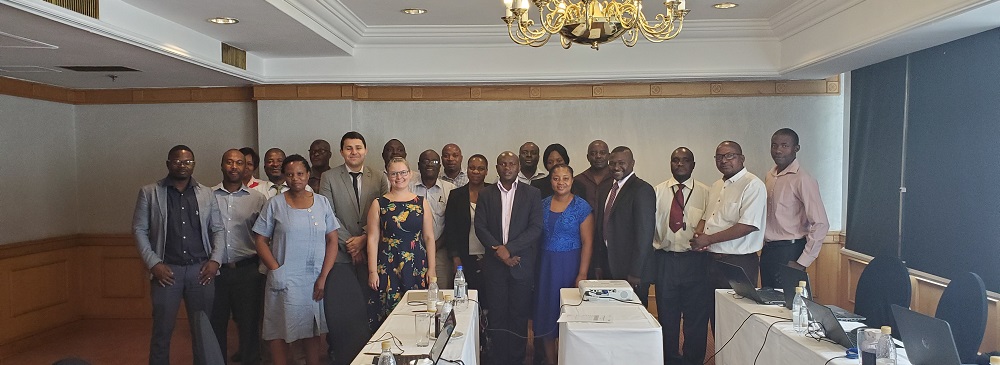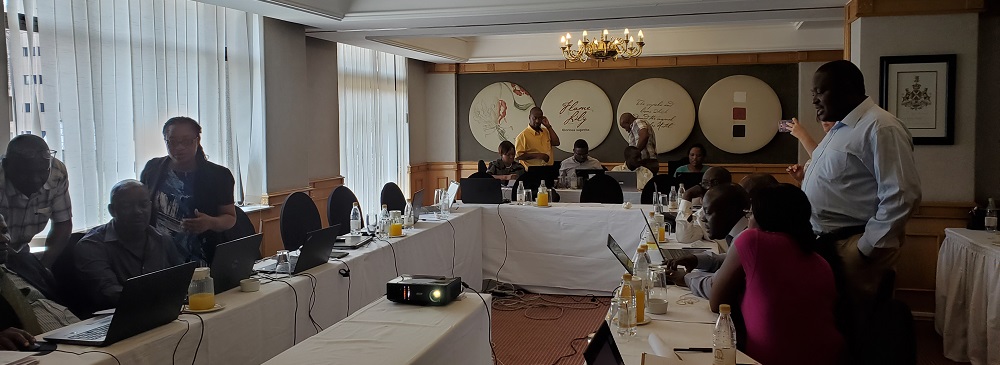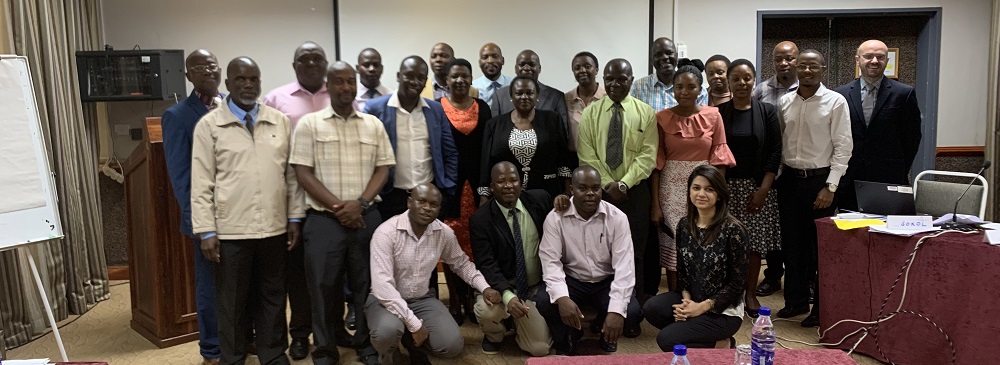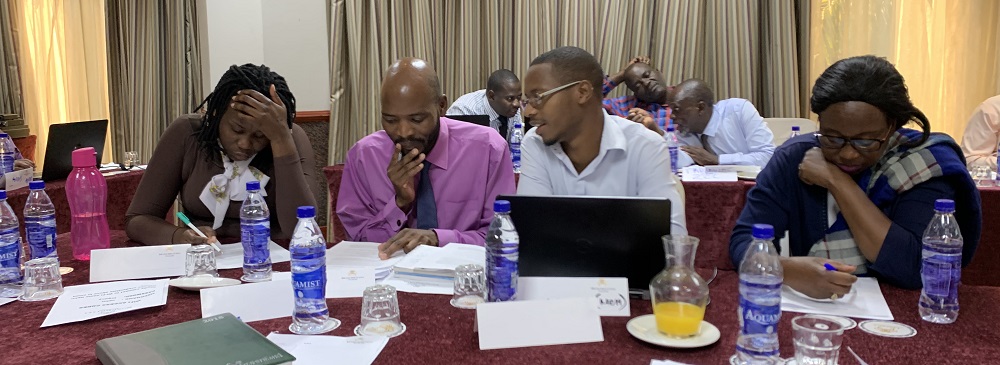Zimbabwe
General on SDG monitoring set up in country
- SDG organisational set up in country (general text provided)
- Set of national SDG indicators
- Link between SDGs and general national strategies and implementation plans
- Capacity gap assessments
- SDG monitoring strategies
In Zimbabwe, the overall SDG process is overseen by the Office of the President and Cabinet (OPC). The work is implemented joinly by agencies and ministries who are involved in SDG monitoring, with the Ministry of Labor and Social Welfare (MLSW) having and overall coordination responsible. The work on goal implementation has been split into three different groups which have all been given responsibility for a certain amount of goals. They are led by MLSW, the Ministry of Health and Child Care and Ministry of Agriculture.
SDG report and Voluntary National Review
Zimbabwe is currently working on its annual SDG Progress Report. The report will provide the main materials for Zimbabwes second Voluntary review which will be presented at the High Level Political Forum in New York in July 2020.
Thorough process to agree on a set of national SDG indicators
One of the tasks the agencies have been working on is to agree on and prioritize a localized set of SDG indicators. In this process, the agencies used two guiding principles; i) alignment with the Transitional Stabilization Program (LINK TO) with its M&E framework and ii) availability of data to measure progress on the goals. The work is now in its final stages and will soon be made available.
For the second process, ministries identified goals they could provide data for and reported back on availability. The process gave insight and learning as many did not know how to extract information in the required format. This was particularly linked to usage of administrative data and there is a agreement that there is a need to gain more experience on how to extract information from registers which helps inform the SDG agenda. As a response to this, the MLSW organized practical workshops on how to populate the indicators.
In total, the national indicator framework consists of ... indicators. Of these, ... are corresponding to the globally defined indicators.
In 2018, UNSD worked with Zimstat on assessing the capacity of the Zimbabwian statistical system of reporting on the globally agreed indicators. The assessment identified 28 indicators to be currently available and additional 57 indicators to be easily feasable to obtain. More details of this assessment can be found here (ADD LINK AND FILE). Whether all of them actually will be collected and disseminated will depend on the final set of the national indicator framework.
- Coordination committees
- Data sharing arrangements
- Actual data sharing mechanisms
- Open data
- Other good practices
COORDINATION OF SDG DATA AND STATISTICS
A Data for Development Group was established many years ago. In recent years it has mainly focused on data exchange related to the SDGs although it is not formally a part of the SDG cluster system. The group has agreed on an excel template for SDG indicator reporting from responsible agencies to Zimstat and some agencies are already providing information.
In October 2019 a workshop was conducted with support from UNSD for all focal points. They agreed on a monitoring and evaluation template which is in its final stages of development.
The SDGs are also specifically mentioned in the current National Strategy of Development of Statistics - NSDS II for the years 2016-2020 . A thorough mapping of the SDGs to the prior development plan was made which can be seen in the annex of the Strategy.
Currently there are not many agencies who share their SDG data with Zimstat yet. Some agencies are sharing data generally, however, among those the Ministry of Health. Collaboration is also working well because Zimstat regularly seconds statisticians to the ministry to support statistical work. A formal agreement on data sharing is in place with the Zimbabwian Revenue Authority.
UNSD presented various options for data sharing with Zimstat and representatives of the wider statistical system in October 2019. The proposed way forward is to develop a joint agreement under the Data for Development Group on sharing SDG indicators. It was furtheer suggested that the agreement, or exchange of letters, should specify which indicators or variables each agencies is expected to share, disaggregation dimensions, periodicity of sharing and means of sharing.
The District Health Information System (DHIS2) is seen as a potentially useful source for data on SDG 3. Processed data are also expected to be received from Ministry of Education and Ministry of Energy to some extent. For other agencies, more work and support in processing the data, including data quality assessments and improvements, will be needed.
Data availability and disaggregation
- Work to make more indicators available
- Work to allow more data disaggregations
Zimstat mainly provides data for indicators through census and surveys. Many of these are disaggregated by gender and geographical area.
In total, current avaiability is ....
- National publication/report
- Collaboration/trainings provided
- Activities/good practices
To be updated after Ben and Lynns mission
- Link to platform
- Info on national DSD customization??
- Other information as relevant
Zimbabwe has chosen to use the Open Data Portal provided by the African Development Bank. A first round of trainings has been provided, and the plan is to make the platform publicly available in the spring 2020, before the 2020 Zimbabwian Voluntary National Review.
- Actvities and good practices on interaction with various user groups
Zimbabwe has already officially adopted its first User Engagement Strategy (PROVIDE LINK) as part of the UNSD-DFID project.
Zimstat has also already started implementation of agreed upon user engagement activities. This includes various advocacy campaigns, for instance presence at an international trade fair where ... Zimstat is also currently in the process of updating and improving its webpage.
Generally, Zimstat annually celebrates Africa Statistics day. They also conduct breakfast meetings where specific topics o finterest are covered.
To learn more from users, user-producer symposium are conducted every 5 years. In these symposiums they get an update from various users and listen to the users expectations and additional needs from Zimstat. Who participates is selected from a list which all the different Zimstat divisions maintain. It is usually a mix of different user groups, including non-Govermental actors. Zimstat also runs consultative workshops when launching a survey.



